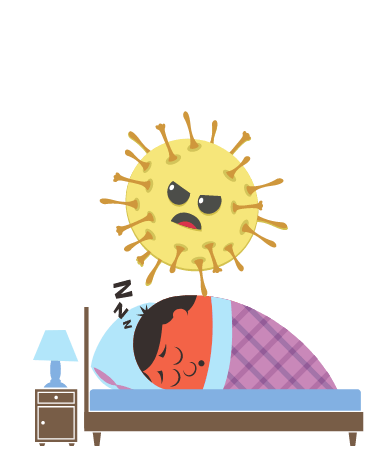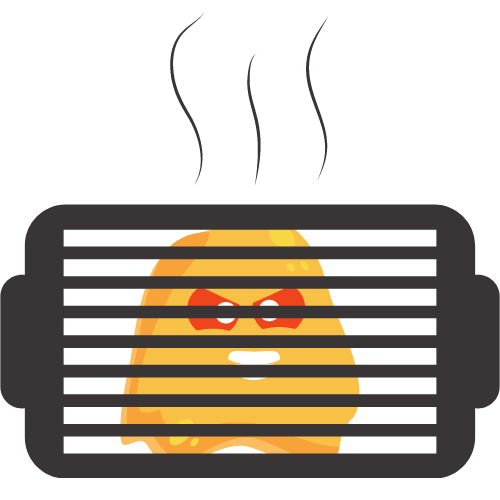9
Facts About Mold in Air Ducts Every Georgia Homeowner Should Know
You wake up in the morning with a bizarre headache, sore throat, runny nose and watery eyes. While rolling out of bed, you experience dizziness and lay back down. This isn't a regular cold or the flu because you feel better when you are out of the house or at work, but the moment you return to your Georgia home and crank on the central air system, these health problems begin all over again. As you lay in bed waiting for the room to stop spinning, your eyes notice black spots along the air duct vent. Could the problem be black mold in the HVAC system?
As an
air duct cleaning company,
Dynasty Ducts
has fielded questions from homeowners who are worried about mold impacting their home's
preservation, air quality, and their health. Let us provide you with answers to the most common questions about mold in air ducts and how to deal with the problem.
1.
Mold in Air Ducts: How Common Is It?
Mold can occur anywhere in the home, even in drywall. For mold to grow, there must be certain conditions present:
While you may assume that there are no warm temperatures or moisture in the air when cranking up the AC, the presence of water vapor could still be created in the ducts. This water vapor could come from other areas of the home, such as the bathroom after taking a shower, that has entered the vent. When the cooler, conditioned air flows over the water vapor from the bathroom, kitchen, laundry room or other warm environment, water droplets can form along the inside of the pipe. Instead of evaporating, these droplets remain stuck to the inside of the metal.
Next, mold spores enter the air duct. Mold spores can be found everywhere. When they enter the ideal environment where it is warm, dark, and wet, they only need nutrients to grow. These nutrients can be found in dust, pollen, dead skin, pet dander or dirt that is present in the air ducts.
2.
Can Mold Travel Through Air Vents?
The simple answer is yes. Since the mold spores are airborne and carried through the air duct system when the furnace or air conditioner unit is turned on, the spores will travel throughout the system until coming to the place that has moisture, no sunlight and nutrients to grow.
Due to the mold spores being able to travel, it can sometimes be difficult to discover the source of the problem. Also, once mold starts to grow, it can come back even after you wipe it from the vent. The mold spores must be killed off completely and the source of the mold growth must be dealt with to prevent the problem from reoccurring.
3.
Black Mold in Air Ducts
Can Mold in Air Ducts Make You Sick?
There are many different types of mold out there. Not every type of mold will be toxic to you, your pets and your family. Yet some molds can cause mild allergic reactions, or will further aggravate existing allergies or asthma symptoms. Some common types of mold that may be found in the home and in air ducts include:
Cladosporium
Penicillium/Aspergillus
Chaetomium
Ulocladium
On very rare occasions, toxic black mold called Stachybotrys chartarum, may be present in the home. This mold is more commonly found along drywall, attics, basements or in homes that have experienced flooding where materials have remained wet for more than 72 hours. While this mold is black or a very dark green in color, other non-toxic molds can also be this color. So even though there may be black spots on a vent or in the duct, it may not be the toxic black mold variety.
4.
Can Sleeping Under a Vent Make You Sick?
Keep in mind that just sleeping underneath a ceiling air vent will not make you sick. If you don't have any allergies or medical conditions like asthma, you may also not feel sick when the furnace or air conditioner is running.
Yet some people can be more sensitive to air pollutants and contaminants. If there is dust, mildew or mold present -- even in small quantities -- they may feel sick or have their allergies triggered more often. If the house generally has poor circulation, these contaminants can build up and sometimes cause healthy people to feel sick. Also keep in mind that if mold spores are left unattended, they can grow and become an infestation in the air ducts. This mold will significantly decrease the air quality and cause medical issues for everyone.
5.
Mold in Air Duct Symptoms
How Do I Know If Black Mold is Making Me Sick?
It can be difficult to determine whether mold is the reason for your sickness because many of the symptoms can be caused by other factors. For people who are sensitive to allergies, mold in air ducts symptoms may include the following:
Sore Throat
Runny or Clogged Nose
Red, Watery Eyes
Dry Cough
Skin Rashes
Wheezing
Sinusitis
People who have asthma or lung problems may also experience worsening respiratory conditions. If there is toxic Stachybotrys chartarum black mold present, a person may experience mold poisoning (mycotoxicosis). There can also be these other health concerns: nose bleeding, changes in mood, aches, pains, memory loss, and headaches. People with weak immune systems may experience an increased risk of developing fungal infections.
6.
Is There Mold in My Air Ducts?
The most common way to tell if there is mold in the air ducts is to see visible signs along the intake vents, around drip pans or around the air ducts. Other ways to tell if there is a mold problem include:
Musty Odors
The air may smell musty or the strong scent of mildew may be present in certain rooms or throughout the house when the central air system is turned on.
A/C Irritation
You may experience nose, eyes or throat irritation when you step into a room that has had the air conditioner on.
Allergic Reactions
Allergic reactions such as rashes, wheezing, watery eyes or a runny nose may be present.
Unexplained Symptoms
You or your family may experience unexplained headaches, dizziness, nausea, or fatigue only when you are at home. The symptoms disappear when going outside.
The two best ways to determine if mold is present in your home or making you sick are to have your ducts inspected and to have a mold test performed. There are several different types of tests available, such as an air test and a swab test. While there are do-it-yourself kits available, it is advisable to have a professional company perform the testing to determine the presence of mold spores. If mold spores are detected, samples can be gathered and sent off to a lab for analysis to figure out the type of mold that is in your home.
Related topics:
7.
Air Duct Mold Removal
How Do I Get Rid of Mold in My Air Ducts?
For very mild and isolated cases where the problem is reachable, you can perform the mold in air duct cleaning yourself using a homemade cleaning solution or a commercial mold removal solution. Unfortunately, if the solution isn't strong enough to completely kill the mold spores, the mold will keep growing back.
Hiring a professional cleaning company is typically the better solution to address air duct mold removal, especially if you are experiencing health concerns as you should limit your exposure to the present mold. Our air duct cleaning technicians at Dynasty Ducts will professionally inspect every air duct to identify the presence of mold as we can also help determine what is causing the issue. The issue could be a leaky duct system, a cracked water pipe, blocked vents, or even a bathroom ventilation system that was installed incorrectly as the fan is venting the warm and humid air into the house.
Once figuring out the root cause of the moisture issue, we can provide advice on how the problem can be repaired. Then once repairs are made, our technicians will take special mold remediation and containment steps. We will professionally clean out the air ducts to remove the mold as well as the dust and dirt that provides nutrients to it. We will also use a UVC light system to contain the mold to prevent it from spreading and to destroy any remaining spores.
8.
What Do Customers Say About Dynasty Ducts as an Air Duct Cleaning Company?
Got Mold in Your Vents?
Request a Free Quote
Mold in Air Ducts Request
We will get back to you as soon as possible.
Please try again later.
9.
Do Air Purifiers Help With Air Duct Mold Removal?
Air purifiers with HEPA filters can help homes that continually experience mold problems. They are designed to filter out the spores and other contaminants from the air before they reach a moisture source. They can be a long-term solution to prevent mold growth.
However, air purifiers should not be the only solution. Addressing water leaks, providing regular maintenance to HVAC systems, and periodically getting your ducts cleaned will provide a more well-rounded solution to prevent future mold issues.
Black mold in your air ducts can be a serious problem. Here at Dynasty Ducts, we will professionally inspect and remove the mold to improve the air quality of your home. Contact us today for more information.
Reference: Medical News Today
Navigation
Contact
Local Dryer Vent Cleaning & Repair and Air Duct Cleaning Services in and around
Alpharetta
|
Atlanta
| Brookhaven |
Buckhead
| Chamblee | Cumming | Duluth |
Dunwoody
| East Cobb |
Holly Springs
|
Johns Creek
| Kennesaw | Lilburn |
Marietta
|
Milton
|
North Druid Hills |
Peachtree Corners
|
Roswell
|
Sandy Springs
|
Smyrna
|
Suwanee
| Tucker
© 2024 Dynasty Ducts. All rights reserved.





